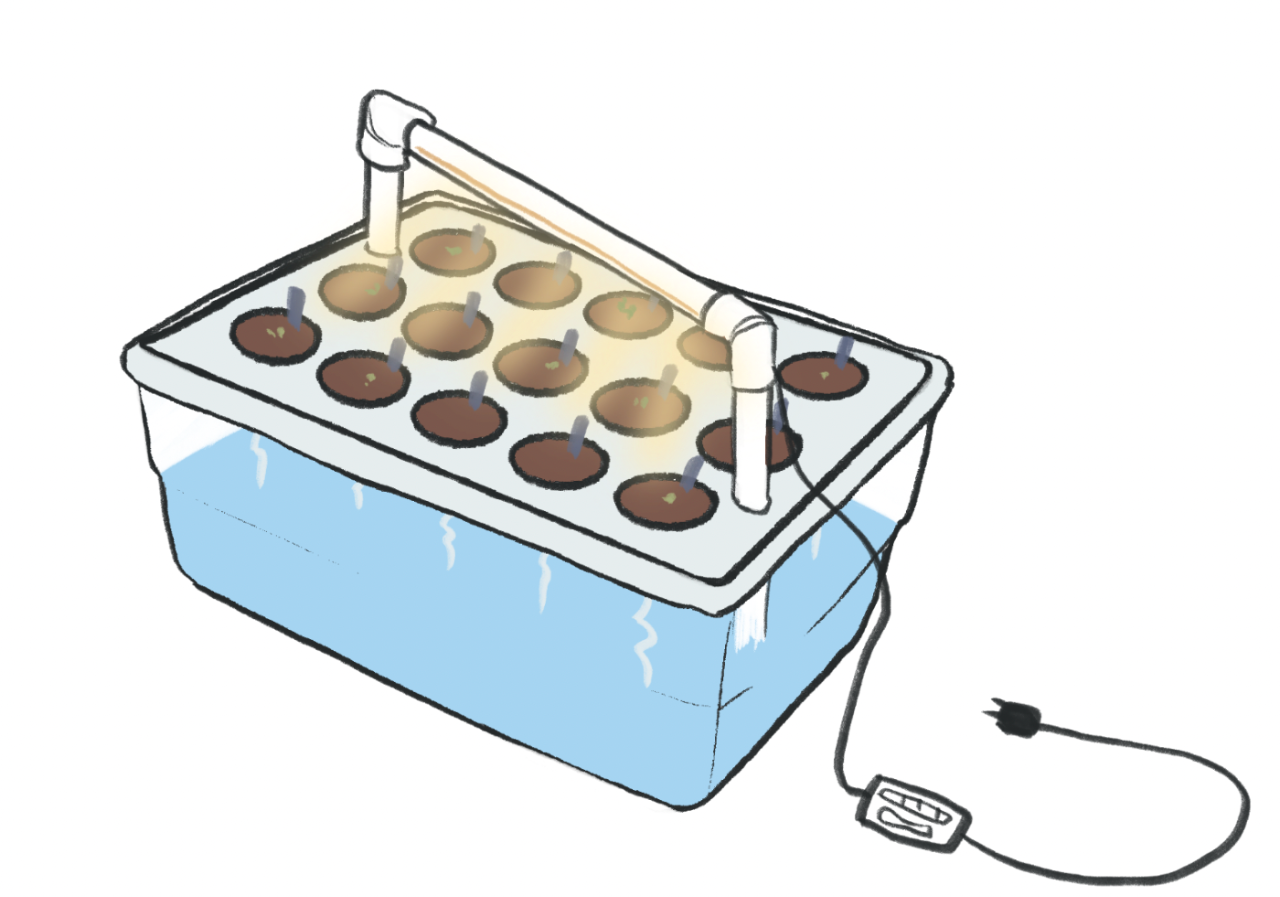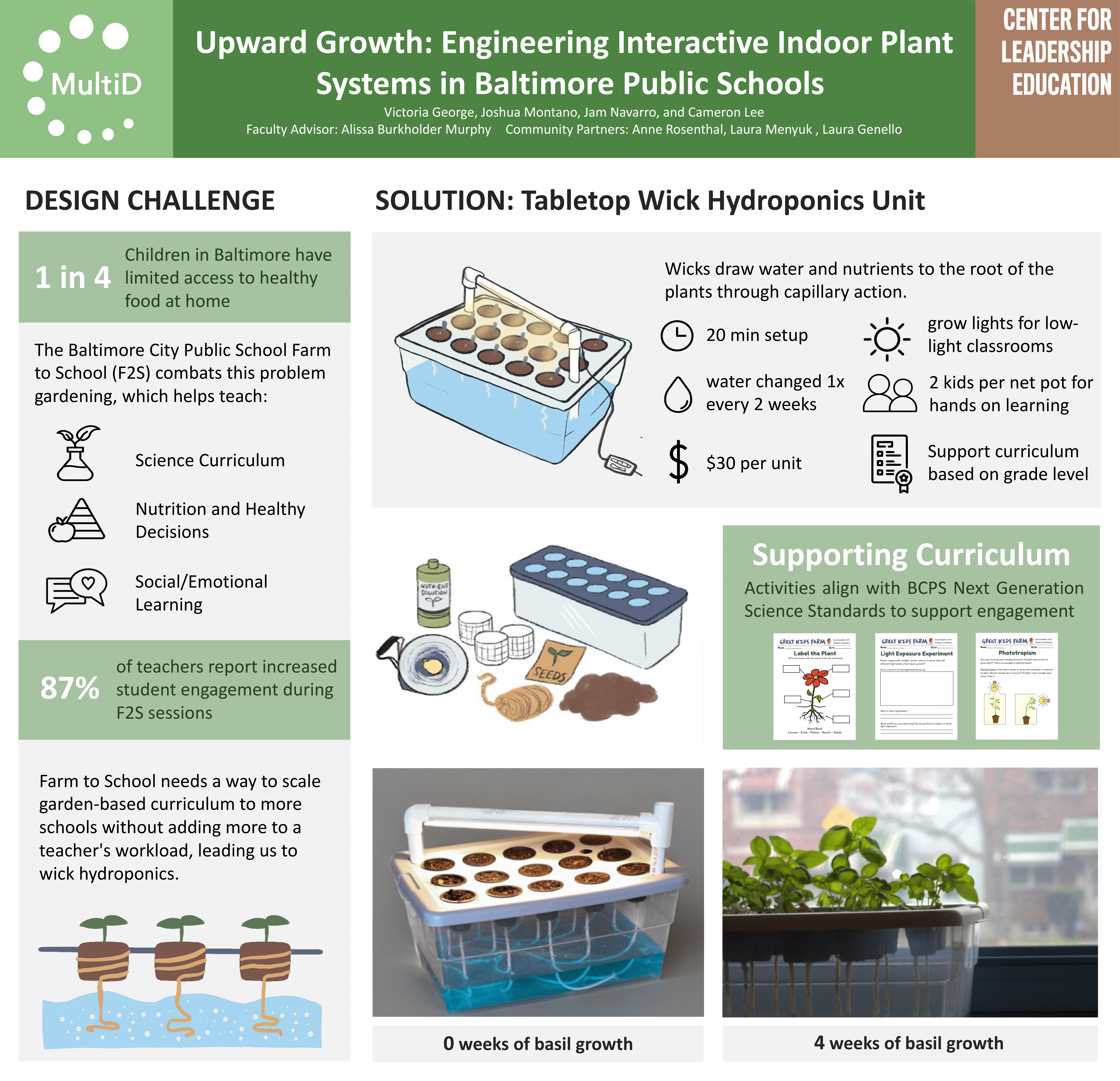Indoor Gardens for Experiential Learning in Classrooms Using Wick Hydroponics
Project Description:
Our team has developed a wick hydroponic plant system that is low-maintenance, successfully grows basil seedlings, and accounts for low light environments with an LED grow light. Wick hydroponics works through capillary action. The hydroponic wick draws the nutrient solution up to the soil, ensuring the seeds and roots don’t dry out. This allows for our solution to be low maintenance and only require changing the nutrient solution every 2 weeks to accommodate the busy schedules of teachers and allow them to leave the plant system over the weekend and for school breaks. Additionally, along with the plant system, we include a set of instructions and supplemental activities for increased student involvement and integration into the science curriculum.
Project Mentors, Sponsors, and Partners
- Anne Rosenthal
- Laura Menyuk
- Laura Genello
- Farm to School
Project Video
This video describes the design process for our project on indoor gardens for experiential learning in classrooms using wick hydroponics. It explains the project motivation with interviews with our project partner, the Baltimore City Public School Farm to School program, and describes common challenges teachers face, which we found through our research. The video details our initial prototyping and brainstorming process before we settled on a wick hydroponics solution. It includes descriptions of the prototyping process, our finished product, and an interview with a teacher who tested our prototype.




